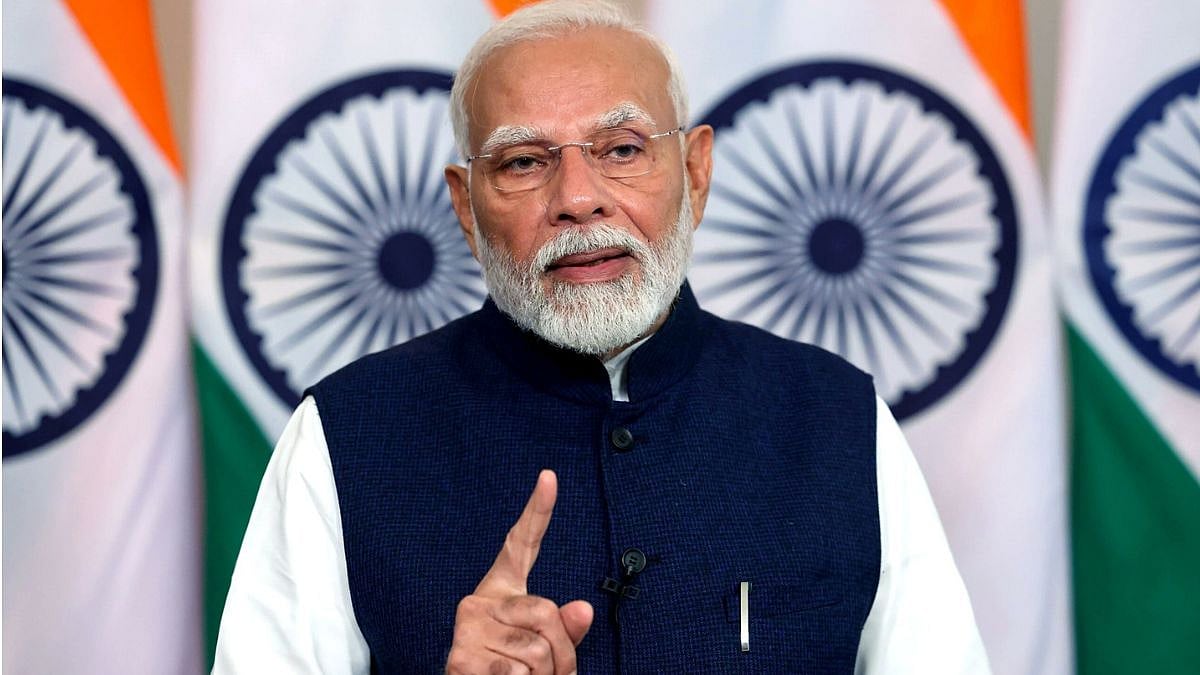Prime Minister Narendra Modi was in Russia on July 8-9, on his first state visit in his third term. Almost simultaneously a NATO summit, commemorating its 75th anniversary, convened in Washington on July 9-11. Hovering over it are the Ukraine war and questions about the US president Joe Biden’s physical fitness for another four-year term.
Related to the latter issue is the likelihood of former president Donald Trump getting re-elected. When in power he called NATO “obsolete”. He has also boasted that it was his tthreat to withdraw from it which forced the European members to move towards committing 2% of GDP to defence. So Trump too looms over the Washington conclave.
The New York Times reports intelligence assessment that the Ukraine war is now stalemated. Ukraine has managed to strengthen its defensive capabilities after receiving more weapons. The US Congress in May also approved the $ 61 billion aid-package for Ukraine. The Russian advance on Kharkiv has been thwarted. Despite Russia obtaining weapons and ammunition from Iran and Democratic Republic of Korea it is running low on soldiers. That explains the induction of foreigners lured, like the Indians stuck in the war zone, by promises of high-paying employment.
Thus it is inexplicable why the Indian prime minister would arrive in Moscow when the Ukraine issue and Russia were expected to dominate a crucial NATO summit. It seemed like a typical Putin gambit. For instance, Russia’s Ukraine attack began in February 2022 days after Putin visited China and made President Xi Jinping swear to a “no limits” friendship. Obviously China did not envisage a military confrontation with NATO, although subsequently it exploited the situation once Russia got entrapped. Similarly Putin caused dissonance between Pakistani Prime Minister Imran Khan and his military over his presence in Moscow as the Ukraine war began. This was seen by the army as compromising the traditional pro-US tilt of Pakistan’s foreign policy.
While India’s quest for maintaining strategic autonomy requires that it hedges between traditional friends like Russia and others like the US, with which is a growing strategic relationship. Because India’s real challenge is from China, Russia’s excessive dependence on China affects Indian interests. So far India has played the balancing game well. But the untimely Modi-Putin hug is raising hackles in some countries. Ukrainian President Volodymyr Zelensky called it “unfortunate” and a threat to peace. US said it had made known its redlines. Some in Australian media sound bewildered by actions of a QUAD partner.
It is unimaginable that South Block did not foresee the global impact of warm Russian engagement at that particular moment. It is possible they felt that with the Russian counteroffensive mostly successful and Ukraine pinned down a new scenario may emerge. If Trump wins, as polls are predicting, Ukraine may be compelled to accept the status quo and ceasefire. This could enable President Putin to recover international acceptability.
Hungarian Prime Minister Viktor Orban, with his country assuming the rotating presidency of the European Union, unleashed a unilateral diplomatic offensive. He visited Kiev to engage President Zelensky. Then went to Moscow to meekly communicate with President Vladimir Putin to solve the Ukraine crisis. He claimed, despite protests from Brussels, to represent the EU. Orban’s travel video ended with a Trumpian slogan: Make Europe Great Again.
But he well exceeeded his designated role. He was also embarrassed as the morning after meeting President Putin, the Russians bombed a children’s hospital in Kiev. Consequently, moves are afoot to have the European Parliament advance the presidency of Poland, thereby ending Hungarian presidency and diplomatic adventures. Orban’s mistake was bypassing the authorised functionaries i.e. European Commission chief Ursula van der Leyen and European Council head Charles Michel.
The Washington NATO summit is being held at the Andrew W Mellon Auditorium, where the organisation was created in 1949. President Bill Clinton held the 50th anniversary summit of NATO at the same venue. In all, 38 nations will attend, including the 32 members. Sweden, the latest entrant attends its first summit. The additional invitees are Pacific countries like New Zealand and Republic of Korea. The intention appears to be to envision NATO’s role expanding to the Indo-Pacific. Post 9/11 NATO members did participate in the Afghan operations. China is seen as the new threat to the global order established after World War II, especially with its military pressure on Taiwan and Philippines.
But Ukraine remains the immediate preoccupation of the group. Zelensky wants Ukraine’s entry path to NATO specified if not etched. Most members do not want to provoke Russia further. But Putin’s recent visits abroad and meetings defy the International Criminal Court and its warrants, as indeed western sanctions.
This uneasy standoff and NATO summit are unnecessarily casting a shadow on Prime Minister Narendra Modi’s Russia visit. Hopefully the government has a game plan to retrieve the situation.
KC Singh is former secretary, Ministry of External Affairs










